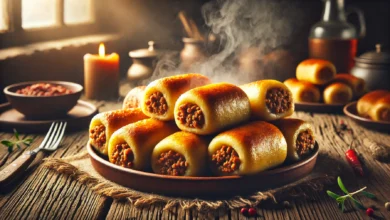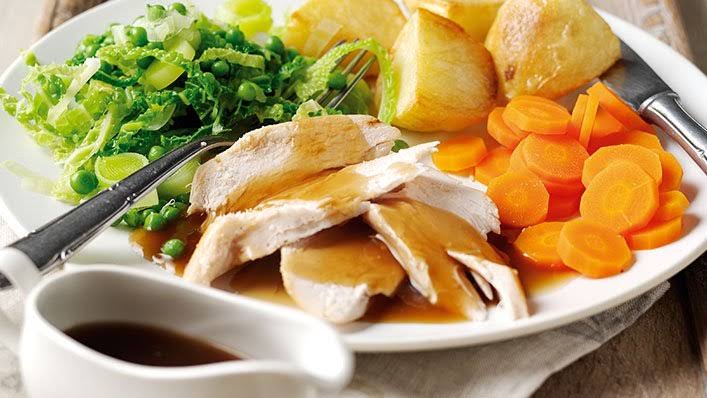What are the Different Cuts of Steak?

When it comes to enjoying a delicious steak, understanding the different cuts of meat can significantly enhance your dining experience. Whether you’re grilling at home or ordering at a steakhouse, knowing the nuances of each cut can help you select the perfect steak that suits your taste and cooking style. In this article, we’ll explore some of the most popular steak cuts, highlighting their unique characteristics and the best cooking methods to bring out their flavors.
1. Ribeye
The Ribeye is often hailed as the king of steaks, and for good reason. This cut comes from the rib section of the cow and is known for its rich marbling and intense flavor. The marbling of fat throughout the meat ensures a juicy and tender steak when cooked, making it a favorite among steak enthusiasts.
Best Cooking Methods: Ribeye steaks are best cooked over high heat, making them perfect for grilling or pan-searing. The high fat content renders beautifully, creating a flavorful crust while keeping the inside tender and juicy.
2. Filet Mignon
If tenderness is what you’re after, the Filet Mignon is your go-to cut. Cut from the smaller end of the tenderloin, this steak is exceptionally tender with a mild flavor. However, due to its leanness, it lacks the marbling found in cuts like the Ribeye, which means it’s not as flavorful.
Best Cooking Methods: Filet Mignon is best cooked over medium to high heat. It’s often grilled or pan-seared and then finished in the oven. Since it’s a lean cut, many chefs prefer to wrap it in bacon to add flavor and moisture.
3. New York Strip
The New York Strip, also known as the Strip Steak or Sirloin Strip, is a well-marbled cut that strikes a balance between tenderness and flavor. It’s cut from the short loin of the cow, which is located behind the ribs. The meat is slightly firmer than the Ribeye but still tender, making it a popular choice for steak lovers.
Best Cooking Methods: Like the Ribeye, the New York Strip benefits from high-heat cooking methods such as grilling or broiling. It’s a versatile cut that can also be pan-seared and finished in the oven.
4. T-Bone and Porterhouse
The T-Bone and Porterhouse beef steak are two cuts that offer the best of both worlds, combining the tenderness of the Filet Mignon with the flavor of the New York Strip. These cuts are taken from the short loin and feature a “T”-shaped bone that separates the two types of meat. The primary difference between the two is the size of the filet; the Porterhouse has a larger portion of tenderloin compared to the T-Bone.
Best Cooking Methods: Both T-Bone and Porterhouse steaks are best cooked on the grill to allow the bone to impart additional flavor. They can also be broiled or pan-seared, though care must be taken to cook both sides evenly.
5. Sirloin
Sirloin steak is a versatile cut that comes from the rear back portion of the cow. It’s divided into the top sirloin and bottom sirloin, with the top sirloin being the more desirable and tender of the two. Sirloin is a leaner cut compared to the Ribeye and New York Strip, but it still offers good flavor and tenderness.
Best Cooking Methods: Sirloin steaks can be grilled, broiled, or pan-seared. Due to its leanness, it’s important not to overcook the sirloin to avoid it becoming tough.
6. Flank Steak
Flank steak is a lean, flavorful cut that comes from the abdominal muscles of the cow. It’s known for its distinctive grain and is often used in dishes like fajitas or stir-fries. Because it’s a tougher cut, it benefits from marinating and should be sliced thinly against the grain to maximize tenderness.
Best Cooking Methods: Flank steak is best cooked quickly over high heat, either by grilling or broiling. It’s often marinated to enhance its flavor and tenderness before cooking.
7. Skirt Steak
Similar to flank steak, skirt steak is a thin, flavorful cut that comes from the diaphragm muscles of the cow. It’s prized for its rich beefy flavor and is often used in Latin American dishes like carne asada.
Best Cooking Methods: Skirt steak should be cooked quickly over high heat. Grilling or broiling works well, but care should be taken not to overcook, as it can become tough. Like flank steak, it should be sliced against the grain.
Conclusion
Choosing the right cut of steak can make all the difference in your culinary experience. Whether you prefer the rich marbling of a Ribeye, the tenderness of a Filet Mignon, or the robust flavor of a New York Strip, there’s a steak cut to suit every palate. Next time you’re at the butcher or steakhouse, you’ll be better equipped to select the perfect cut for your next meal.



